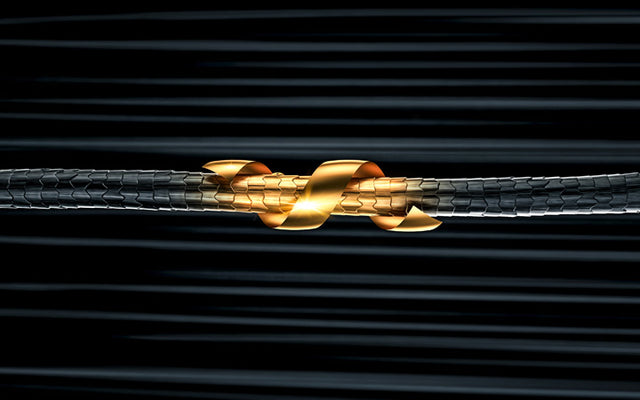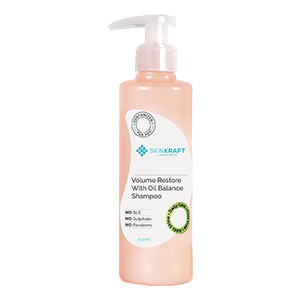Silky, shiny, soft and healthy hair - are these your major hair goals? Then, it’s time to introduce hydrolyzed keratin into your regime.
Hydrolyzed keratin is a multifunctional and go-to strengthening protein that helps your damaged hair turn over a new leaf. This article tells you everything you need to know about this elixir - from its usage, to benefits and side effects. Keep reading.
Highlights:
What Is Hydrolyzed Keratin?
Firstly, keratin is a protein that’s naturally found in your hair. [1] It’s responsible for your hair’s health. While keratin makes your hair strong, it’s also prone to damage due to environmental aggressors.
For this reason, hydrolyzed keratin has been introduced into several hair care formulations to supplement what has been weakened.
Hydrolyzed keratin is a large protein molecule that is broken down after a chemical process in a manner such that it can penetrate the hair cuticle. It is sourced from a larger keratin molecule.
Keratin is broken down by splitting its bond with the addition of hydrogen and hydroxide (water). At the end of the chemical process, the keratin is reduced into smaller fragments that the hair can absorb, thanks to its lower molecular weight.
Essentially, hydrolyze means to fragment the protein or break into smaller pieces in a non-specific manner. The broken-down proteins deposit themselves on the hair’s shaft. Due to the low molecular weight and the small size, the hydrolyzed keratin proteins go beyond the cuticle, penetrate the hair shaft and reduce damage.
Where Does Hydrolyzed Keratin Come From?
Keratin is naturally produced within the body, just like biotin. Biotin, a water-soluble vitamin, assists in the metabolism of protein which provides a foundation for keratin.
You can also find keratin in food sources. Foods high in vitamin C, biotin, lean protein and whole grains are keratin-rich and improve keratin in your nails and hair.
Topical products like nail treatments, lotions, shampoo and conditioner also contain hydrolyzed keratin.
What Does Hydrolyzed Keratin Do To Your Hair?
When you use hydrolyzed keratin on your hair topically, it helps fill the minor gaps throughout the hair shaft, including its three layers - the medulla, cortex and cuticle. It’s like pouring cement into a crack.
When the broken down protein fills these microscopic gaps, hair gets the strength to minimize damage from chemical treatments, heat styling, mechanical manipulation and the sun.
Here are some of its other benefits
- Reduces frizz, shedding and breakage.
- Increases smoothness and elasticity with its moisture-binding abilities.
- Essentially, hydrolyzed keratin helps rebuild the hair’s natural protective layer from the inside by increasing the diameter of each strand. This gives a fuller appearance and replaces lost protein. [2]
- When hair treatments contain broken down or hydrolyzed keratin, it creates a protective barrier on the hair and simultaneously imparts shine.
- Hydrolyzed keratin works on the skin too, and it restores moisture and improves the elasticity of the skin.
- Its moisturizing properties make shampoos and conditioners that contain hydrolyzed keratin a go-to option for those with brittle, dry or limp hair.
- It’s an excellent choice to tame unruly hair and make it more manageable.
- As hair is made from keratin, it’s one of the best proteins to treat hair that’s heavily manipulated or chemically damaged. Usually, when hair undergoes chemical processes, the amino acid cysteine breaks down and results in weakened and damaged hair. Keratin is known to replace this lost cysteine. Hydrolyzed keratin increases cysteine content, which increases tensile strength and minimizes damage.
- It also increases volume, strengthens your hair, and restores luster.
Note :
Don’t confuse hydrolyzed keratin with Brazilian keratin treatments. The former doesn’t possess any straightening properties. It’s used to build up bonds rather than break them.
How To Use Hydrolyzed Keratin?
Whether your hair is difficult to style, dry or damaged, include hydrolyzed keratin in your haircare arsenal. In no time will your hair look and feel shinier, softer, fuller and stronger.
Store-Bought vs. DIY Treatment
Store-Bought
One of the most convenient options is to buy protein treatments and hydrolyzed keratin right off the shelf. Typically, when you buy such products off the shelf, they are blended into the formulation. So you can use them directly on your hair. It’s a straightforward process.
All you have to do is carefully follow the printed instructions on the label to ensure you don’t over-process your hair. You may require a hooded dryer or a processing cap for some treatments - which is why it’s best you closely read the directions.
SkinKraft Tip:
It’s better if you stick to the recommended time duration and measurement and don’t exceed either.
DIY
1. Your first step will be to determine which type of hair product you will add the hydrolyzed keratin to - a deep conditioner, conditioner, shampoo or all of the above.
2. If you’re adding protein to shampoo or conditioner, you can use it as you normally would.
3. After you choose the hair product, measure how much product you will use.
4. Based on the recommended concentration, calculate the quantity of protein you need to add. For instance, you will roughly need 2 to 12 ml of hydrolyzed keratin.
5. Once you establish your portion size and measure it out, you can pour it into the desired container and mix it together.
6. Evenly apply this mixture onto your hair and try to stay away from the scalp as much as possible to reduce the likelihood of clogged pores.
7. After time’s up, thoroughly rinse your hair.
How Can I Repair Damaged Hair?
Before you buy every type of protein treatment out there, here are five indications that your hair is crying out for a protein treatment:
- Your hair has lost its elasticity
- Your hair is breaking and shedding
- Your hair is color-treated
- Your hair has high porosity
- Your hair is limp and stringy
By conditioning your hair with hydrolyzed keratin, you are replacing the missing and damaged keratin from your hair, therefore, keeping the hair pliable, resilient and strong.
Does Hydrolyzed Keratin Contain Formaldehyde?
While traditional keratin treatments remain widely available, you can get your hands on an organic keratin treatment. They are non toxic and don’t contain any formaldehyde. Typically, they make use of ingredients like olive oil and amino acids. They’re just as effective and can protect your hair against breakage, strengthen and restore it to a healthy state.
Formaldehyde is a strong-smelling, colorless gas in keratin treatments that blasts open the cuticle and speeds up the keratin bond to the hair. Studies reveal that the use of formaldehyde is harmful and can result in coughing, breathing problems and other respiratory problems, nosebleeds, scratchy eyes, sore throat and in the worst case, cancer.
Side Effects Of Hydrolyzed Keratin
As a deep moisturizing conditioner, you shouldn’t apply hydrolyzed keratin as often. Typically, most hair can endure protein treatments every six weeks. There are a few people who can get away with four or five weeks. Some hair types need to wait up to three months. It all depends on the condition of your hair.
SkinKraft Tip :
Low porosity hair can undergo fewer treatments, while high porosity hair will need more frequent treatments.
Did you know that excess protein does more harm than good? It will deliver the very opposite result of what you’re looking for. An overload of protein can make your hair feel brittle and if you stretch it too much it will snap due to too much stretching. To illustrate this better, think of your hair like dry pasta before boiling - it’s hard. After boiling, it’s softened. Similarly, you need moisture to reverse the overload of protein.
Is Hydrolyzed Keratin Vegan?
Hydrolyzed keratin is broken down from keratin and keratin is derived from quills, feathers, horns, ground-up hooves of various dead animals. There is no synthetic keratin, and keratin can’t be sourced from vegetables. So hydrolyzed keratin is not vegan or cruelty-free. However, of late, vegan derived keratins are available.
Wrapping Up
Hydrolyzed keratin has several benefits. It helps restore damaged hair and bring it back to life. It’s best to consult your hairstylist about different treatments and find one that works best for your hair.
Recommended Products
Was this Article helpful?
- Least helpful
- Most helpful











